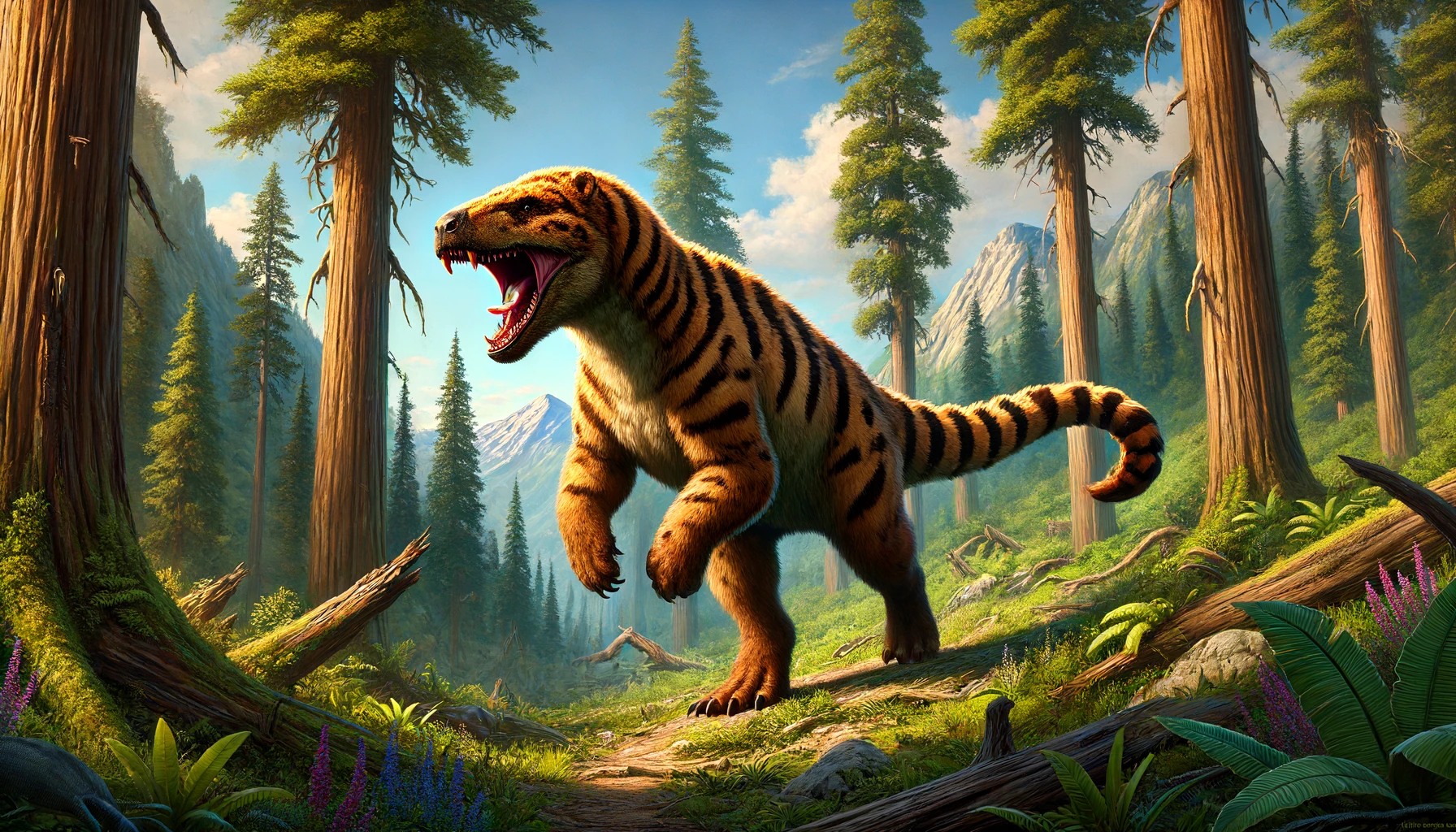Scientific Classification:
- Kingdom: Animalia
- Phylum: Chordata
- Class: Mammalia
- Order: Carnivora
- Family: Felidae
- Genus: Ursionex
- Species: Ursionex scorpius
Common Name: Grizzloraptor
Description:
The Grizzloraptor is a formidable predator with the head of a grizzly bear, the body of a jaguar, and a scorpion-like tail equipped with a venomous stinger. This unique combination provides it with powerful jaws, sleek agility, and a potent defense mechanism.
Habitat:
Indigenous to the British Columbia Sector Overview A Sector, commonly referred to as a Provincial Sector, is a designated area of space within the broader and diverse cosmic region known as the Canadian Expanse. These Sectors function similarly to provinces, contributing to the organization and governance of this vast territory. Structure and Division The Canadian Expanse is divided into thirteen Provincial Sectors, each with its own... More and the Nunavut Sector
Overview A Sector, commonly referred to as a Provincial Sector, is a designated area of space within the broader and diverse cosmic region known as the Canadian Expanse. These Sectors function similarly to provinces, contributing to the organization and governance of this vast territory. Structure and Division The Canadian Expanse is divided into thirteen Provincial Sectors, each with its own... More and the Nunavut Sector Overview A Sector, commonly referred to as a Provincial Sector, is a designated area of space within the broader and diverse cosmic region known as the Canadian Expanse. These Sectors function similarly to provinces, contributing to the organization and governance of this vast territory. Structure and Division The Canadian Expanse is divided into thirteen Provincial Sectors, each with its own... More, the Grizzloraptor thrives in dense forests, mountainous regions, and secluded areas with abundant prey.
Overview A Sector, commonly referred to as a Provincial Sector, is a designated area of space within the broader and diverse cosmic region known as the Canadian Expanse. These Sectors function similarly to provinces, contributing to the organization and governance of this vast territory. Structure and Division The Canadian Expanse is divided into thirteen Provincial Sectors, each with its own... More, the Grizzloraptor thrives in dense forests, mountainous regions, and secluded areas with abundant prey.
Behavior and Ecology:
- Diet: Primarily carnivorous, preying on large mammals and occasionally fish.
- Senses: Possesses an excellent sense of smell and hearing, compensating for its relatively poor vision.
- Hunting Techniques: Utilizes keen senses for tracking, agility for ambushing, and venomous stinger for immobilizing prey.
- Social Structure: Typically solitary but can form temporary packs for large hunts.
Domestication:
- Use in Hunting: Can be domesticated and trained for hunting due to their exceptional tracking abilities.
- Training: Requires experienced handlers, focusing on harnessing their natural hunting instincts.
Reproduction:
- Breeding Season: Spring, with a gestation period of around six months.
- Offspring: Usually gives birth to 1-3 cubs, which stay with the mother until they can hunt independently.
Conservation Status:
- Threats: Habitat loss and poaching are significant threats.
- Protection Measures: Conservation efforts include habitat preservation and anti-poaching initiatives, with some regions establishing breeding programs.
Cultural Significance:
- In Hunting Traditions: Highly regarded by hunters in its native sectors for their tracking abilities.
- In Folklore: Often depicted in local myths as guardians of the forest, symbolizing strength and agility.
The Grizzloraptor’s unique attributes and adaptability make it a fascinating subject for study and a valued companion in hunting traditions within its native regions.

